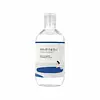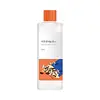What's inside
What's inside
 Key Ingredients
Key Ingredients

 Benefits
Benefits

 Concerns
Concerns

No concerns
 Ingredients Side-by-side
Ingredients Side-by-side

Water
Skin ConditioningGlycerin
HumectantPropanediol
SolventGlycereth-26
HumectantPentylene Glycol
Skin ConditioningBetula Platyphylla Japonica Juice
Skin Conditioning1,2-Hexanediol
Skin ConditioningChondrus Crispus Extract
Skin ConditioningSaccharum Officinarum Extract
MoisturisingSodium Hyaluronate
HumectantHyaluronic Acid
HumectantPanthenol
Skin ConditioningTromethamine
BufferingDipotassium Glycyrrhizate
HumectantGlyceryl Caprylate
EmollientGlyceryl Glucoside
HumectantButylene Glycol
HumectantAscorbic Acid
AntioxidantCarbomer
Emulsion StabilisingXanthan Gum
EmulsifyingDisodium EDTA
Water, Glycerin, Propanediol, Glycereth-26, Pentylene Glycol, Betula Platyphylla Japonica Juice, 1,2-Hexanediol, Chondrus Crispus Extract, Saccharum Officinarum Extract, Sodium Hyaluronate, Hyaluronic Acid, Panthenol, Tromethamine, Dipotassium Glycyrrhizate, Glyceryl Caprylate, Glyceryl Glucoside, Butylene Glycol, Ascorbic Acid, Carbomer, Xanthan Gum, Disodium EDTA
Water
Skin ConditioningGlycerin
HumectantButylene Glycol
Humectant1,2-Hexanediol
Skin ConditioningPropanediol
SolventMethyl Gluceth-20
HumectantGlycine Max Seed Extract
Skin ConditioningAmmonium Acryloyldimethyltaurate/Vp Copolymer
Diphenyl Dimethicone
EmollientTriethylhexanoin
MaskingDipropylene Glycol
HumectantLimnanthes Alba Seed Oil
Skin ConditioningSodium Citrate
BufferingHydroxyacetophenone
AntioxidantEthylhexylglycerin
Skin ConditioningHydrogenated Lecithin
EmulsifyingPanthenol
Skin ConditioningPolyglyceryl-10 Oleate
Skin ConditioningCitric Acid
BufferingAdenosine
Skin ConditioningPolyglyceryl-10 Stearate
Skin ConditioningCetearyl Olivate
Sorbitan Olivate
EmulsifyingTocopherol
AntioxidantCapryloyl Salicylic Acid
ExfoliatingGluconolactone
Skin ConditioningCaprylic/Capric Triglyceride
MaskingMethylpropanediol
SolventCetearyl Alcohol
EmollientGlyceryl Stearate
EmollientGlycine Soja Seed Extract
Skin ConditioningPhloretin
AntioxidantTetrahydropiperine
Skin ConditioningCeramide NP
Skin ConditioningCholesterol
EmollientStearic Acid
CleansingTetraacetylphytosphingosine
Skin ConditioningGlycosphingolipids
EmollientXanthan Gum
EmulsifyingArginine
MaskingCeramide AP
Skin ConditioningTrifolium Pratense Extract
Skin ConditioningPotassium Cetyl Phosphate
EmulsifyingWater, Glycerin, Butylene Glycol, 1,2-Hexanediol, Propanediol, Methyl Gluceth-20, Glycine Max Seed Extract, Ammonium Acryloyldimethyltaurate/Vp Copolymer, Diphenyl Dimethicone, Triethylhexanoin, Dipropylene Glycol, Limnanthes Alba Seed Oil, Sodium Citrate, Hydroxyacetophenone, Ethylhexylglycerin, Hydrogenated Lecithin, Panthenol, Polyglyceryl-10 Oleate, Citric Acid, Adenosine, Polyglyceryl-10 Stearate, Cetearyl Olivate, Sorbitan Olivate, Tocopherol, Capryloyl Salicylic Acid, Gluconolactone, Caprylic/Capric Triglyceride, Methylpropanediol, Cetearyl Alcohol, Glyceryl Stearate, Glycine Soja Seed Extract, Phloretin, Tetrahydropiperine, Ceramide NP, Cholesterol, Stearic Acid, Tetraacetylphytosphingosine, Glycosphingolipids, Xanthan Gum, Arginine, Ceramide AP, Trifolium Pratense Extract, Potassium Cetyl Phosphate
 Reviews
Reviews

Ingredients Explained
These ingredients are found in both products.
Ingredients higher up in an ingredient list are typically present in a larger amount.
1,2-Hexanediol is a synthetic liquid and another multi-functional powerhouse.
It is a:
- Humectant, drawing moisture into the skin
- Emollient, helping to soften skin
- Solvent, dispersing and stabilizing formulas
- Preservative booster, enhancing the antimicrobial activity of other preservatives
Butylene Glycol (or BG) is used within cosmetic products for a few different reasons:
Overall, Butylene Glycol is a safe and well-rounded ingredient that works well with other ingredients.
Though this ingredient works well with most skin types, some people with sensitive skin may experience a reaction such as allergic rashes, closed comedones, or itchiness.
Learn more about Butylene GlycolGlycerin is already naturally found in your skin. It helps moisturize and protect your skin.
A study from 2016 found glycerin to be more effective as a humectant than AHAs and hyaluronic acid.
As a humectant, it helps the skin stay hydrated by pulling moisture to your skin. The low molecular weight of glycerin allows it to pull moisture into the deeper layers of your skin.
Hydrated skin improves your skin barrier; Your skin barrier helps protect against irritants and bacteria.
Glycerin has also been found to have antimicrobial and antiviral properties. Due to these properties, glycerin is often used in wound and burn treatments.
In cosmetics, glycerin is usually derived from plants such as soybean or palm. However, it can also be sourced from animals, such as tallow or animal fat.
This ingredient is organic, colorless, odorless, and non-toxic.
Glycerin is the name for this ingredient in American English. British English uses Glycerol/Glycerine.
Learn more about GlycerinPanthenol is a common ingredient that helps hydrate and soothe the skin. It is found naturally in our skin and hair.
There are two forms of panthenol: D and L.
D-panthenol is also known as dexpanthenol. Most cosmetics use dexpanthenol or a mixture of D and L-panthenol.
Panthenol is famous due to its ability to go deeper into the skin's layers. Using this ingredient has numerous pros (and no cons):
Like hyaluronic acid, panthenol is a humectant. Humectants are able to bind and hold large amounts of water to keep skin hydrated.
This ingredient works well for wound healing. It works by increasing tissue in the wound and helps close open wounds.
Once oxidized, panthenol converts to pantothenic acid. Panthothenic acid is found in all living cells.
This ingredient is also referred to as pro-vitamin B5.
Learn more about PanthenolPropanediol is an all-star ingredient. It softens, hydrates, and smooths the skin.
It’s often used to:
Propanediol is not likely to cause sensitivity and considered safe to use. It is derived from corn or petroleum with a clear color and no scent.
Learn more about PropanediolWater. It's the most common cosmetic ingredient of all. You'll usually see it at the top of ingredient lists, meaning that it makes up the largest part of the product.
So why is it so popular? Water most often acts as a solvent - this means that it helps dissolve other ingredients into the formulation.
You'll also recognize water as that liquid we all need to stay alive. If you see this, drink a glass of water. Stay hydrated!
Learn more about WaterXanthan gum is used as a stabilizer and thickener within cosmetic products. It helps give products a sticky, thick feeling - preventing them from being too runny.
On the technical side of things, xanthan gum is a polysaccharide - a combination consisting of multiple sugar molecules bonded together.
Xanthan gum is a pretty common and great ingredient. It is a natural, non-toxic, non-irritating ingredient that is also commonly used in food products.
Learn more about Xanthan Gum